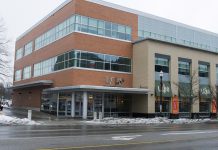UW has the second-best math faculty and the third best engineering program in the country according to the QS World University Rankings. In arts, UW does not fare as well — ranking 16th overall.
With such a disparity in faculty rankings, questions are being raised concerning what the arts department really contributes to UW. According to David Porreca, president of the Faculty Association of the University of Waterloo and co-director of medieval studies, arts contributes quite a bit.
Having a Faculty of Arts “is one of those things to distinguish ourselves as a university rather than a technical college,” Porreca said. The university is “comprehensive as a result of having the broad range of social concerns that are the purview of the arts faculty. And without it, we are not a fully rounded academic institution.”
Students in STEM disciplines benefit from the university’s well-roundedness, too. “There’s a demonstrable need [for STEM students] to be brought up to speed in written and oral communication,” Porreca said.
Recently, the Faculty of Mathematics made it mandatory for every first year student to fulfill a writing skills requirement before starting their 2A term. They can do this in one of three ways: score 60 or over on the ELPE, complete a study program at the writing centre, or complete a course from a set list with a grade of 60 or above (courses from the English and speech communication departments, or English as a Second Language credits).
“The ELPE seems to have outlived its usefulness,” Porreca said, and continued that the exam is being replaced by a scheme “of having the real experts do the teaching, and that’s people in English and speech communication.
“You get the same benefit from majoring in arts, only a whole lot more. You get to be a real expert in it,” Porreca said.
According to Porreca, there’s a real demand in upper-level positions for arts graduates with these expert skills. “Both co-directors of the medieval studies program [have been] Faculty Association presidents,” Porecca said. In fact, “since the early 2000s, the presidency has alternated between arts and engineering.”
However, at UW, the attention seems to be on every faculty but arts. According to Porreca, new buildings are going up “just about everywhere else” except for arts, “and benefiting just about every other faculty.
“[I would like] to see the infill extension to Hagey Hall actually complete, and make some space for students to study,” Porreca said.
He said that currently it seems as though the Faculty of Arts is “lacking in a flagship building.” The most notable buildings on campus are easily the newest ones: QNC and E5, as they not only have better design, but include new technology and facilities. The new engineering building has plans to include a futuristic-looking ideas clinic, a 3D-printing facility, and an aerial flight centre.
In 2013, UW released its Sixth Decade Strategic Plan. The focus on entrepreneurship, research, and experiential education was expected. The surprise was the university’s decision to name three specific research areas “where we have the greatest potential for world leadership,” which are citing the document: quantum science, water, and aging.
Many faculty members at the university whose research did not fall into those areas felt excluded. “It was a little dispiriting,” agreed Porreca. “The framing of the messaging left many people feeling left out.” The university’s promise to “allocate current resources and align future resources” towards the three named areas left many worried about changes to funding.
Dr. George Freeman, past president of the Faculty Association and professor of electrical and computer engineering, wrote that naming the three areas may just have made public what was already happening. He wrote, “Significant resources have already been, or are being, directed to those areas, plan or no plan.”
The Faculty of Arts remains the largest faculty at the University of Waterloo, but such strong emphasis on the STEM faculties raises questions of equality, both in quality of education and in resource allocation.






























